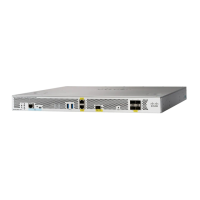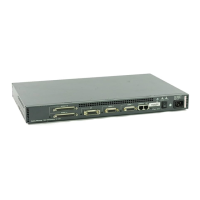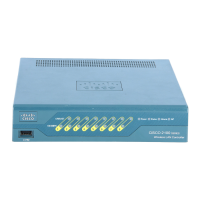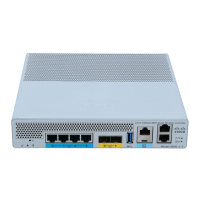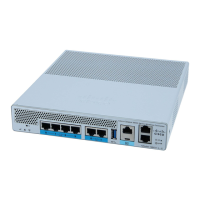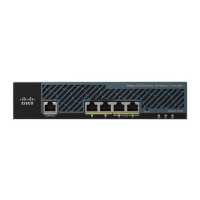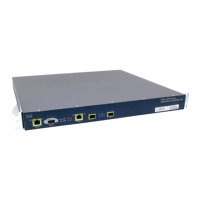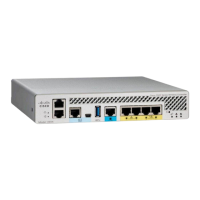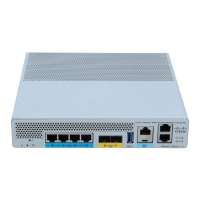1-16
Cisco Wireless LAN Controller Configuration Guide
OL-17037-01
Chapter 1 Overview
Cisco Wireless LAN Controller Failover Protection
Knowing which memory you are modifying is important when you are:
• Using the Configuration Wizard
• Clearing the Controller Configuration
• Saving Configurations
• Resetting the Controller
• Logging Out of the CLI
Cisco Wireless LAN Controller Failover Protection
Each controller has a defined number of communication ports for lightweight access points. This means
that when multiple controllers with unused access point ports are deployed on the same network, if one
controller fails, the dropped access points automatically poll for unused controller ports and associate
with them.
During installation, Cisco recommends that you connect all lightweight access points to a dedicated
controller, and configure each lightweight access point for final operation. This step configures each
lightweight access point for a primary, secondary, and tertiary controller and allows it to store the
configured mobility group information.
During failover recovery, the configured lightweight access points obtain an IP address from the local
DHCP server (only in Layer 3 operation), attempt to contact their primary, secondary, and tertiary
controllers, and then attempt to contact the IP addresses of the other controllers in the Mobility group.
This prevents the access points from spending time sending out blind polling messages, resulting in a
faster recovery period.
In multiple-controller deployments, this means that if one controller fails, its dropped access points
reboot and do the following under direction of the radio resource management (RRM):
• Obtain an IP address from a local DHCP server (one on the local subnet).
• If the lightweight access point has a primary, secondary, and tertiary controller assigned, it attempts
to associate with that controller.
• If the access point has no primary, secondary, or tertiary controllers assigned or if its primary,
secondary, or tertiary controllers are unavailable, it attempts to associate with a master controller on
the same subnet.
• If the access point finds no master controller on the same subnet, it attempts to contact stored
mobility group members by IP address.
• Should none of the mobility group members be available, and if the lightweight access point has no
primary, secondary, and tertiary controllers assigned and there is no master controller active, it
attempts to associate with the least-loaded controller on the same subnet to respond to its discovery
messages with unused ports.
This means that when sufficient controllers are deployed, should one controller fail, active access point
client sessions are momentarily dropped while the dropped access point associates with an unused port
on another controller, allowing the client device to immediately reassociate and reauthenticate.

